My ventures with Hoysala temples continued after a self-imposed break. This time, a friend joined me.
Plan
- Halebelagola
- Hebbelalu
- Mudigere
- Halebelur
- Basavapatna
- Aane Kannambadi
Halebelagola
Halebelagola is on the way to Shravanabelagola. I had been here earlier. But I forgot and added it to my itinerary.
The priest must come from “Betta”, which probably means Shravanabelagola. We waited a few minutes and left as we had many places to cover.
Hebbelalu
I was here some time ago, though it was not a planned Hoysala temple visit.
This village has three temples, one each for Brahma, Vishnu, and Maheshwara. Only Eshwara, known as Singeshwara, temple is of the Hoysala era. It is on the edge of a pond and gets submerged in water during a good rainy season, which is rare.
I could get inside through all the mess in and around the temple during my last visit. But it is entirely covered by shrubs and mud now. Villagers expect outsiders to come and clean it up.
Mudigere
There are supposed to be two Hoysala temples in Mudigere – Eshwara and Yoga Narasimha.
Villagers have renovated the Eshwara temple to a modern structure.

Villagers have no clue about the Yoga Narasimha temple. One of them pointed to me a structure that might be the only remnants of this temple.
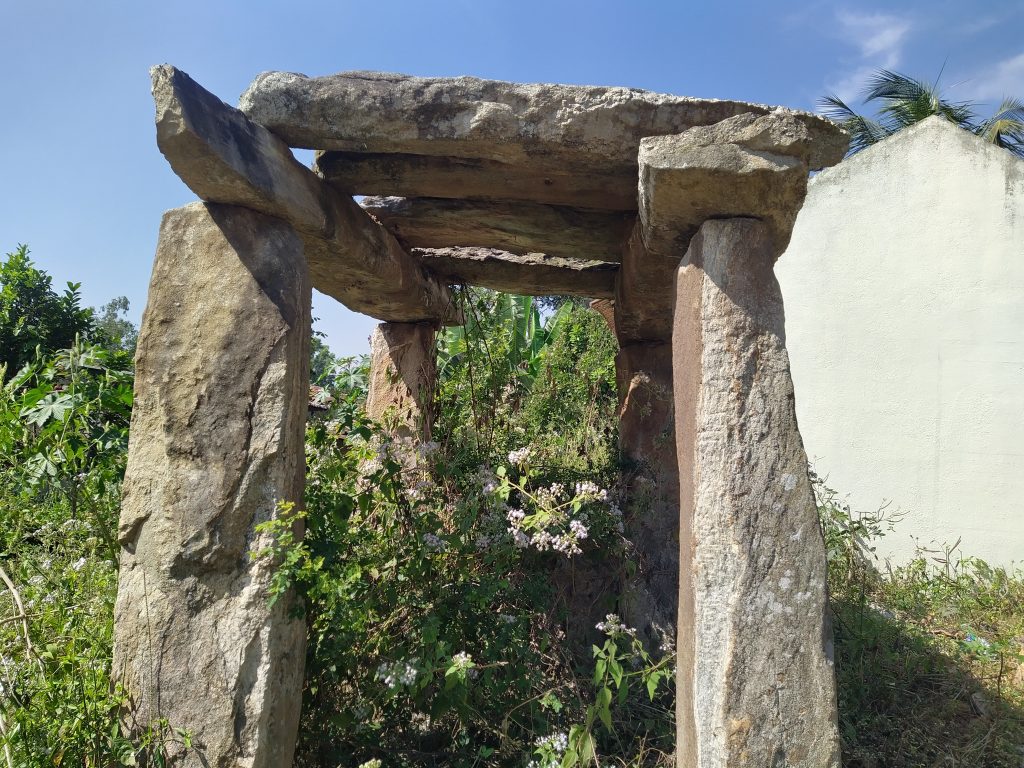
Haalebelur
Haalebelur has a Chennakeshava temple. Someone brought the main deity’s idol from “Mangalore sea” several hundred years ago. The idol is about 6ft, including the platform. Anjaneya is carved on the platform.

As per the inscription, food must be cooked in the eight stoves for this deity. The priest spoke about some bali (sacrifices) offered in nearby villages. But I can’t recollect the exact details now.
A new, bigger temple is being constructed for this deity.
Another Chennakeshava idol discovered recently is kept next to the old one. This one is about 5ft high and does not have any platform. This idol was hidden in Hemavathi to save it from attackers who came from the Manjarabad fort area and was forgotten.
Basavapatna
Basavapatna has three temples of the Hoysala era – Lakshmikanteshwara, Pranataarthiswara, and Shanteshwara.
Pranataarthishwara
Pranataarthishwara is a swayambhu, meaning it formed on its own. Nobody installed it. One day, a saint visited Basavapatna and wished to stay here. However, villagers told him they don’t have an Eshwara temple (I wonder why an Eshwara temple is a pre-requisite for the saint to stay in any village.). The saint pointed to a place in the village and asked them to dig. By the time villagers hit a stone that turned out to be the Lord Shiva idol, the saint had disappeared. So, villagers believe that the saint was just a messenger sent by God himself to help them find this. The saint did his assigned job and left.
The deity is so powerful that if the priest is not disciplined enough, a snake will appear on the idol, not allowing him to do the pooja activities. One such priest succumbed to the insect bite all over the body (insect locally known as emme hEnu).
Kola Shanteshwara
Kola Shanteshwara, also known as Shantishwara or Shanteshwara, is an important temple for the Lingayat community.
More information about it is available in the Sharana Charite video. The reference to Kola Shanteshwara starts from the 30th minute.
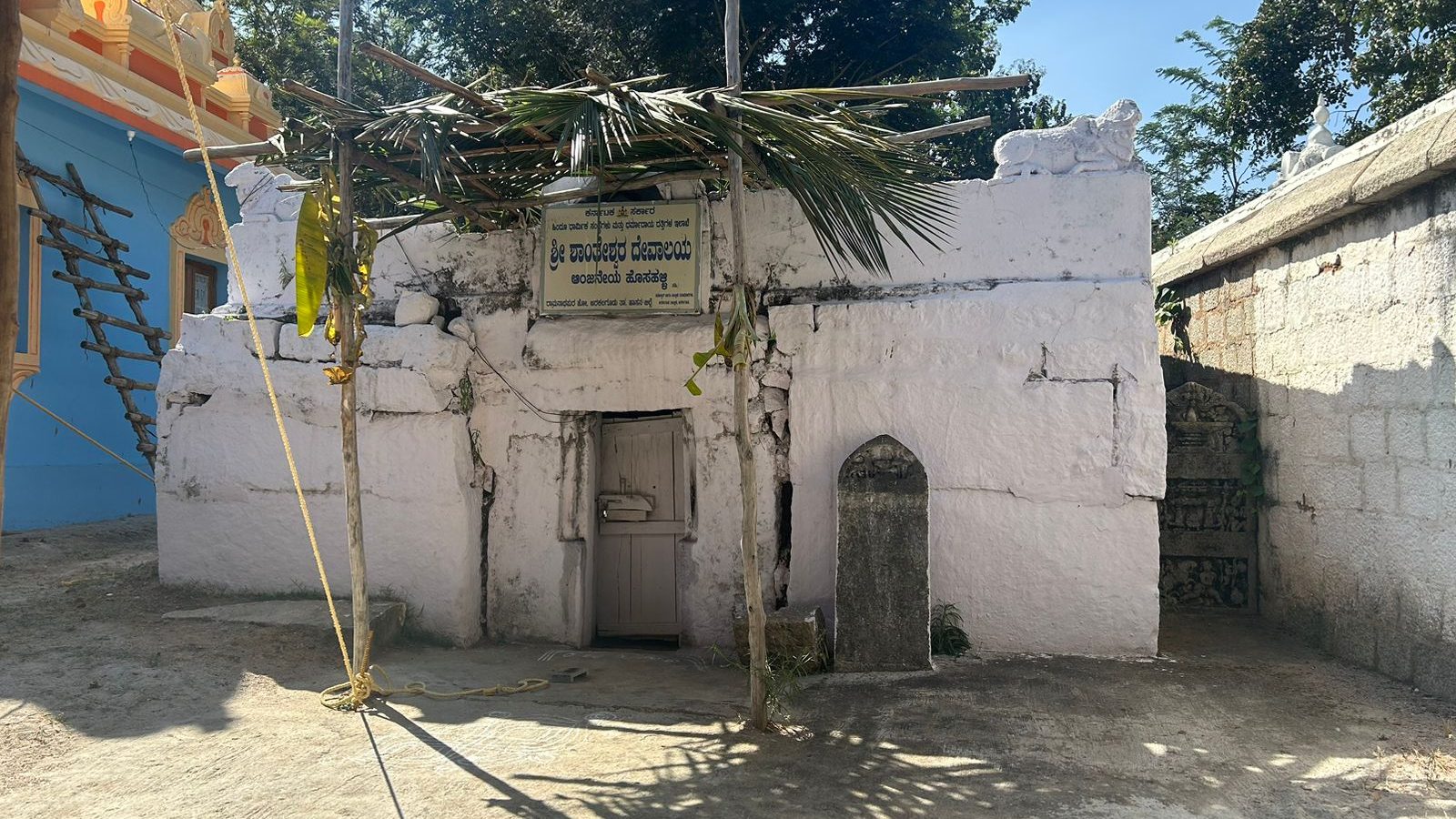
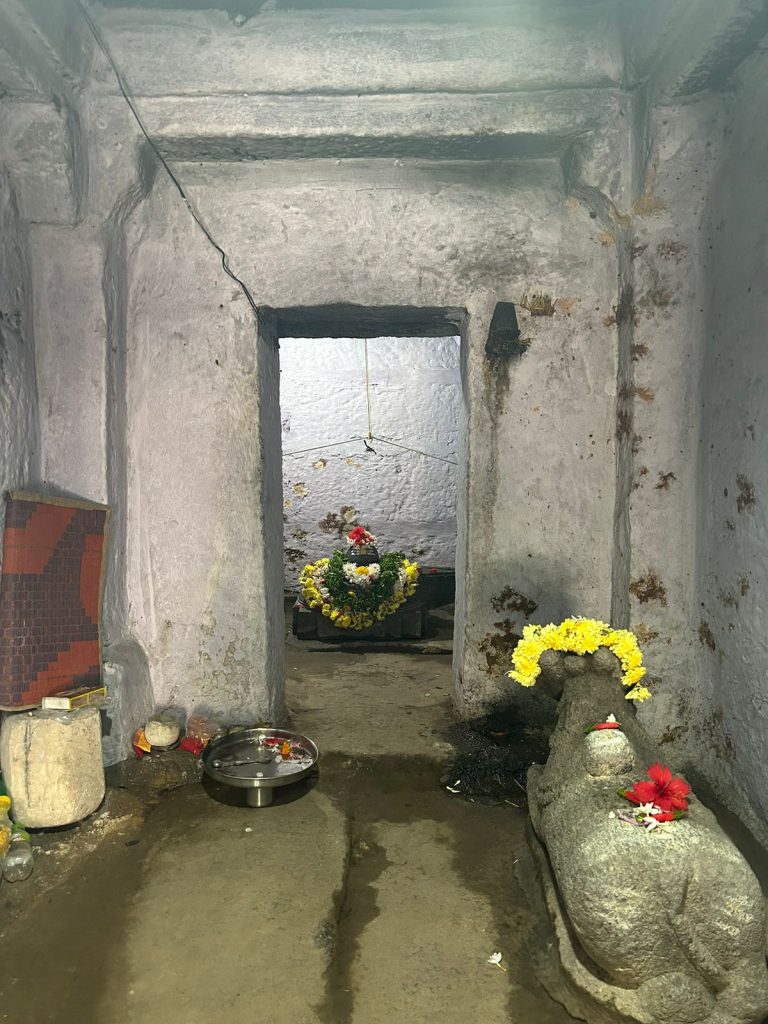
Lakshmikanteshwara
Lakshmikanteshwara is a Vishnu temple and not an Eshwara temple, as I thought.
The idol has dashavatara around it in the prabhavali (aureole). It was established after Ramanujacharya arrived. It has Shanku (Conch) on the right and Chakra (Wheel). The idol itself was won in the war. The deity was not worshipped for some time. One day, God asked some people from Sanketi community to install him.
Aane Kannambadi
The final destination on our list was Aane Kannambadi. The priest had just returned from Mysore and was about to open the temple when we arrived.
Many stones in the temple were left uncarved as the war broke out and the sculptors got busy with war-related activities.

The temple has Venugopala idol, similar to Belavadi, near Chikkamagalur. Other deities in this temple include Lakshmi Narasimha, Durge, and a form of Eshwara (I forgot the name). The temple was constructed during Hoysala’s Vishnuvardhana era.
The Venugopala temple has carvings of a monkey, a peacock, and a cow giving milk to a tiger on the side. The idol is in tribhangi shape, with the toe of a foot touching the ground. The flute of Venugopala has a hole in it.
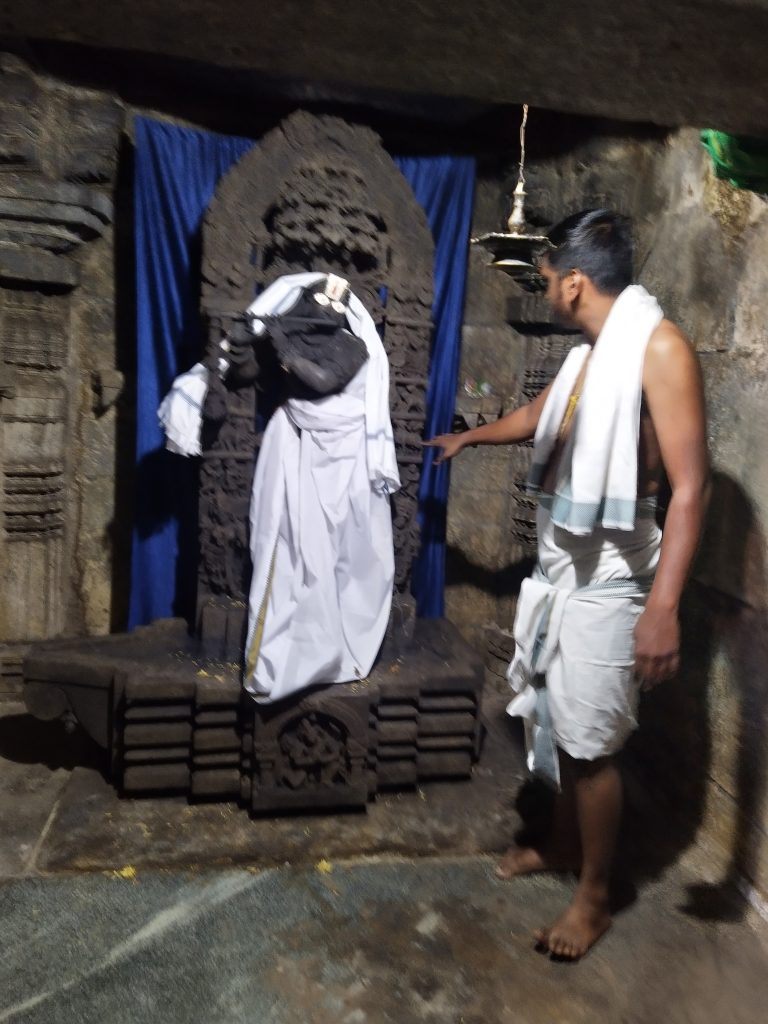
Durge
The aureole of Durge idol has mahisha mardana on the side. This idol is Doddagaddavali’s main idol (I think this was done as a prototype version of the main idol.). That temple has a bigger idol of the same deity.
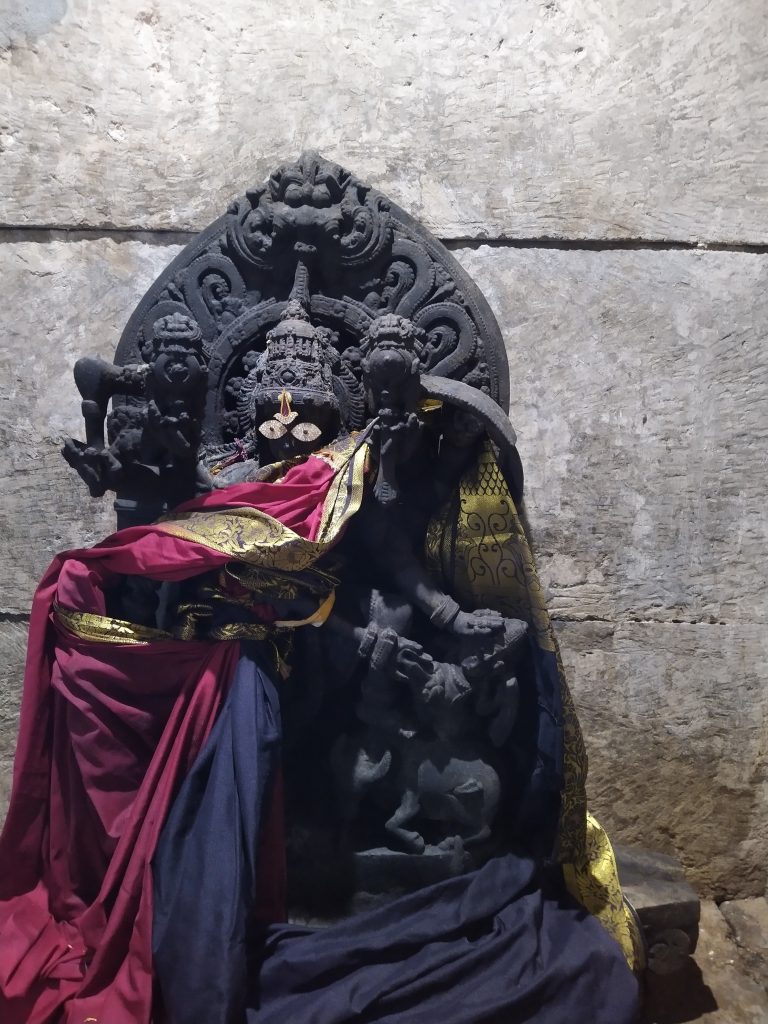
More photos of the temple…
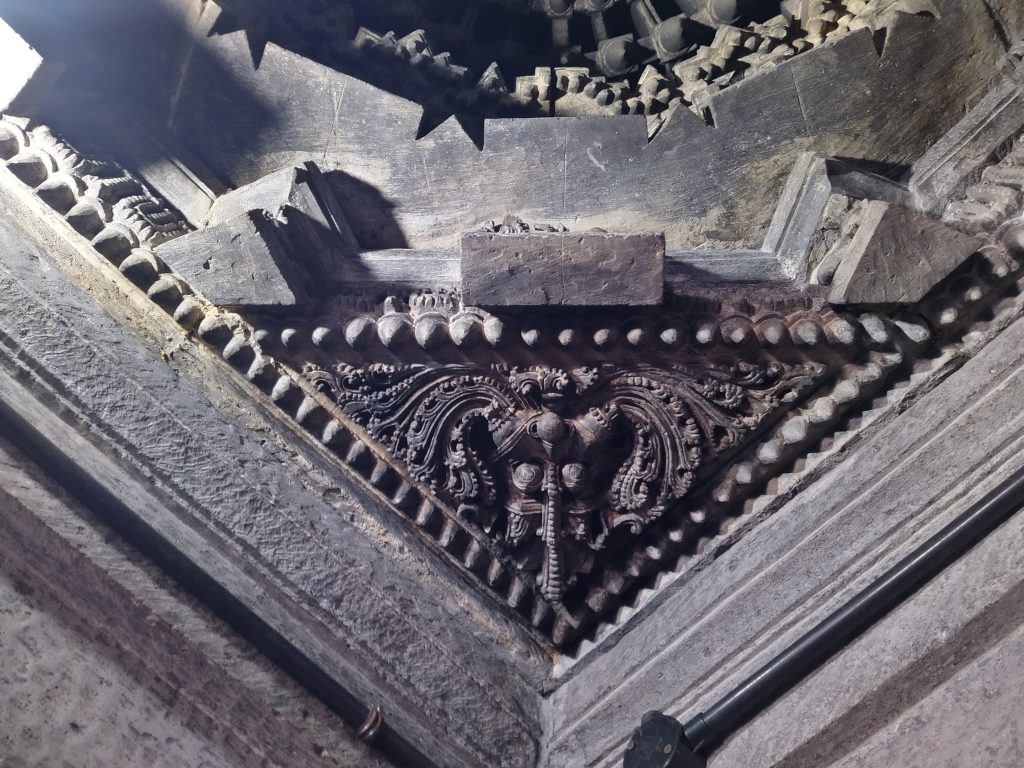
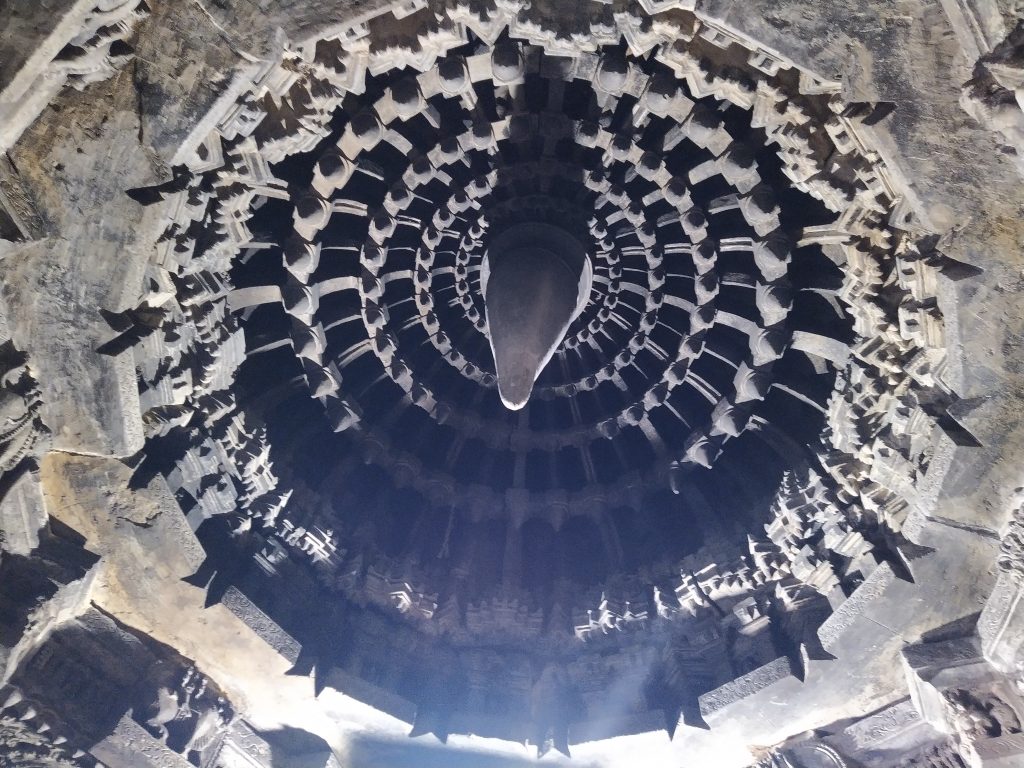
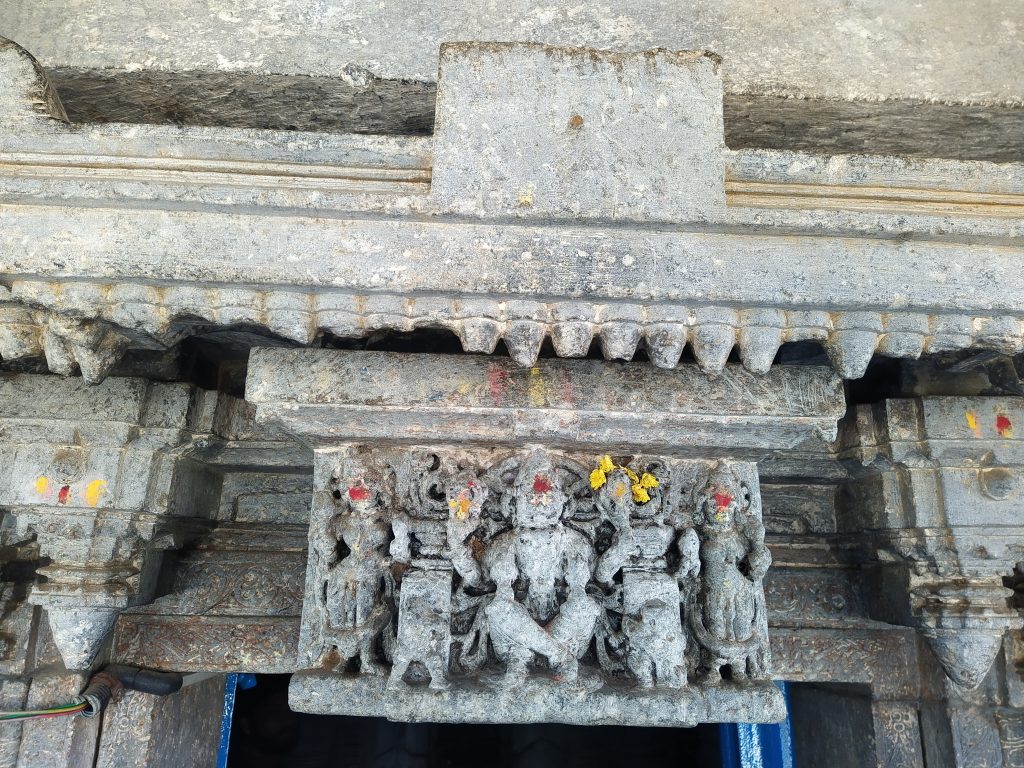
This temple was also renovated by Dharmasthala temple authorities.

With this, we concluded our trip. We headed back home via Mysore Road.
Sidewing
The trip was planned for Saturday, on the day of Vaikunta Ekadashi, and had to be postponed to Sunday due to the non-availability of our driver. I am glad it did because Lakshmikanteshwara temple had a massive celebration on Saturday, and we could not have got any time from the villagers.
The temple and inscription at Halebelagola look good. I should probably make an exclusive visit to this temple some morning to meet the priest.
The Brahma temple in Hebbelalu is also of ancient times, but not even a stone is visible now. All we see is the some shrub covering what villagers claim to be the temple roof.
Google Maps took us to a lake near Mudigere when we searched for Yoga Narasimha Temple, Mudigere. What if Google knows more than villagers, and someday, the temple is discovered inside the lake?
Dogs in front of and inside the gate stopped me from entering the Eshwara temple priest’s home at Mudigere.
Pranataarthishwara is locally known as Eshwara. It took me time to convince villagers there is a Pranataarthishwara temple in the village. My mispronunciation as Praanataarthishwara instead of Pranataarthishwara caused all the confusion among villagers.
We could not meet the main priest of Lakshmikanteshwara temple. He knows a lot more details about this.
Missed taking photos at Basavapatna. Have to visit again. Totally worth it.
The young priest of Aane Kannambadi is a well-connected person. His relatives are priests in many historical temples of the Mandya and Hassan districts.